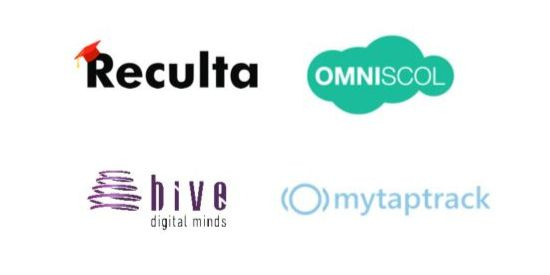AWS Public Sector Blog
Tag: Amazon EC2
Oxford University Press makes high-quality language data available using AWS
Oxford University Press (OUP) is a department of the University of Oxford and the largest university press in the world. In 2015, OUP launched the Oxford Global Languages (OGL) initiative aiming to build lexical resources for 100 of the world’s languages and make them freely available online. OUP knew that on-premises solutions wouldn’t provide the scalability and flexibility required for developing an MVP and expanding it in case of success. OUP chose Amazon Web Services (AWS) because it matched the requirements around scalability and flexibility, provided managed services for storing and accessing data securely, and offered options for deployment and automation.
Tracking global antimicrobial resistance among pathogens using Nextflow and AWS
The Centre for Genomic Pathogen Surveillance (CGPS) is based at the Wellcome Genome Campus, Cambridge and The Big Data Institute, University of Oxford in the United Kingdom. Much of its work involves collaborating with laboratories around the world to enhance genomic surveillance by using big data, engineering, training, and genomic capacity building. Ultimately, the Centre hopes to enable the linking and real-time interpretation of data globally to track pathogens and antimicrobial resistance at an affordable rate. Typically, spikes in cost for research are a common challenge for laboratories. With the cloud, the team wanted to mitigate their costs, and particularly those of their partners in low and middle-income countries, by exploring the Amazon Web Services (AWS) Cloud’s pay-as-you-go infrastructure.
The sum is worth more than the parts: The unintended benefits of moving Microsoft workloads to AWS
Education, nonprofit, and government customers often find themselves moving Microsoft workloads to Amazon Web Services (AWS) for cost savings, but then also reaped performance improvements. AWS can seamlessly support thousands of applications, systems, and solutions – including Microsoft workloads – without disrupting service during migration. Read stories of how AWS global customers used AWS for Microsoft workloads.
Upgrade to the newest Amazon EC2 M5 and R5 instances and save
Your workloads have different characteristics and may have evolved over time, making it challenging to support them with high-performing, scalable and low-cost computing. That’s why we’ve added new Amazon Elastic Compute Cloud (EC2) instances that come with the latest processor technology, to help you optimize your workloads even more and save.
Back to school 2019 hot AWS EdStart startups: School administration technology edition
AWS EdStart members are pushing the limits in education by creating products and solutions to improve school administration. In honor of back to school season, we are featuring companies who are using Amazon Web Services (AWS) to build solutions that help educational institutions improve operations. Read on to learn about these AWS EdStart EdTechs.
Amazon EC2 Spot Instances now available in AWS GovCloud (US) Regions
Amazon EC2 Spot Instances are now available in Amazon Web Services (AWS) GovCloud (US) Regions. AWS GovCloud (US) is Amazon’s isolated cloud infrastructure and services designed to address specific regulatory and compliance requirements of US Government agencies, as well as contractors, educational institutions, and other US customers that run sensitive workloads in the cloud. With Amazon EC2 Spot Instances, AWS GovCloud (US) customers can take advantage of the largest pool of cost-effective compute capacity in the world, while realizing savings up to 90% compared to on-demand prices. Spot Instances provide acceleration, scale, and cost savings that are ideal for fault-tolerant, flexible, loosely coupled, and stateless workloads.
To democratise educational access and experience for millions of students worldwide, CDSM depends on the cloud
CDSM Interactive Solutions Ltd (CDSM), founded in 1998, is a multi-faceted EdTech company that provides bespoke e-learning services and Thinqi, a next generation learning management system (LMS), to the state education sector. We spent some time with two of CDSM’s more senior colleagues, Steve Finch, Head of Marketing, and Darren Wallace, Chief Technical Officer, both of whom have been with CDSM since the early 2000s.
Looking to buy cloud with federal year-end funds?
It’s that time of year again – federal year-end. The clock is ticking for agencies to obligate their remaining FY2019 funds. Before the September 30 deadline approaches, review the list below of implementation and purchasing recommendations to meet your agency’s needs.
Proteins wiggling and jiggling: The University of Nottingham’s Crossbow project paves a new path for biomolecular research using high-performance computing (HPC) and the cloud
The University of Nottingham has a history dating back to 1881, and while the university is now global with campuses in China and Malaysia, its flagship campus remains in the UK. Today, the university’s research efforts span nearly every discipline. One current project is Crossbow, a new, open source software project conceived and developed by Dr. Christian Suess, a research fellow at The University of Nottingham in conjunction with principal investigator Prof. Charlie Laughton, professor of computational pharmaceutical science. Crossbow is based out of the school of pharmacy at the University of Nottingham, where there is a particular interest in researching the design of new medicines using computer simulations of drugs and proteins.
Geo-Diverse Open Training Data as a Global Public Good
Radiant Earth Foundation is a nonprofit focused on delivering open geospatial data and analytics to the global development community (GDC) in support of their missions to address the Sustainable Development Goals (SDGs) and other key targets. Radiant Earth supports GDC by aggregating open geospatial data and providing access through its cloud-based platform, generating open Earth Observation (EO) machine learning tools and training data libraries, and creating new metadata standards through its MLHub Earth initiative. Additionally, the organization offers training resources to support capacity development and expertise in the geospatial and remote sensing sciences.









